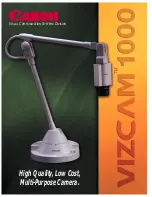
1-6
CP2230 Service Manual
020-100562-06 Rev. 1 (05-2016)
Section 1: Introduction
1.7
Lamp
The Xenon arc lamp resides in the rear left hand side of the projector. Replacing a lamp requires the high-
security key for unlocking the lamp door. The lamp is mounted so that its rear (cathode) end is free to move via
an automatic adjustment mechanism, but its front (anode) end is stable. The front end of the lamp rests in a
supporting "cradle" or yoke, which can be located approximately 1" forward or back to accommodate longer
(4.5kW and 6.0kW CDXL) versus shorter (2.0kW and 30kW CDXL) lamps.
An anode clamp secured to the
end of the lamp protruding beyond this yoke conducts current from the igniter. Good contact between this
clamping collar and the anode end of the lamp is essential for lamp ignition and performance, thus the
materials and design resist deformation caused by the high voltages. With the simple yoke support at the front,
the rear of the bulb is free to move up-and-down (Y-axis adjustment), side-to-side (X-axis adjustment) and
forward-or-backward (Z-axis adjustment) within the necessary ranges for optimized lamp position. These
motorized movements are controlled at the TPC using the LampLOC
™
Do Auto
feature in the
Advanced
Setup>LampLOC Setup
window. Generally, the
Do Auto
positioning is adequate for all installations.
Alternatively, arrow buttons on this same page can be used to move the lamp manually along each axis.
1.7.1 LampLOC
™
Module
The electro-mechanical LampLOC
™
module (a.k.a. lamp adjuster) adjusts the lamp along three axes to
optimize the lamp position relative to the reflector. With the lamp "aimed" properly, the greatest amount of
light will be collected by the reflectors and used in the optical system. All adjustments are motorized using
three stepper motors on the LampLOC
™
module controlled by the nearby Integrated Motor Control Board
(IMCB) under command of TPC software. Feedback from the Light Sensor Module indicates where the light
output is maximized, terminating the lamp movement. In case of an electronics failure, the motors can be
controlled manually with thumbwheels (service technician required, as the rear panel of the projection head
must be removed).
1.7.2 Lamp Reflectors
A pair of glass reflectors-elliptical (rear) and spherical (front)-work together to efficiently collect the lamp light
output and direct it to the optics in the projector. Each reflector mounts to a single common cast and machined
mounting plate using four stainless steel spring clips that minimize stress points. Reflector shapes and coatings
are optimized for maximum brightness. A spun aluminum shield in the same basic shape as the rear reflector is
mounted coaxially with it, essentially covering the outside surface of the reflector and providing a consistent
gap for air flow. High temperature black paint on the inside of the shield absorbs the IR and UV light passed
through by the reflector. Holes in the reflector mount allow cooling air to pass through to the inside of the front
reflector and on to the lamp anode.
Содержание CP2230
Страница 1: ...CP2230 S e r v i c e M a n u a l 020 100562 06...
Страница 2: ......
Страница 3: ...CP2230 S E R V I C E M A N U A L 020 100562 06...
Страница 18: ......
Страница 28: ......
Страница 52: ......
Страница 60: ......
Страница 114: ......
Страница 142: ......
Страница 144: ......
Страница 149: ......
















































